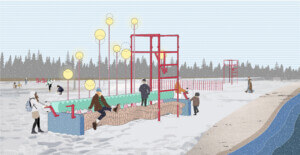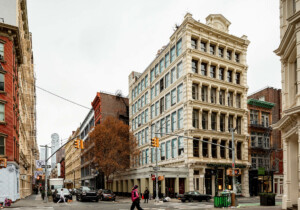MoMA and PS1 have disclosed to AN that the Young Architects Program (YAP) will be going on hiatus next year, following its 20-year anniversary this past summer. AN had heard from sources close to MoMA PS1 that the program might be shutting down, and upon following up with the Queens institution, Martino Stierli, the Philip Johnson Chief Curator of Architecture and Design at the MoMA, provided the following statement:
“Following the 20th anniversary of the Young Architects Program (YAP), MoMA and MoMA PS1 have decided to place the program on a one-year hiatus. We remain deeply committed to supporting and recognizing emerging architectural talent.
“We’ve already started to use the hiatus to bring together a diverse group of influential scholars and professionals, experimental architects and designers, and previous YAP winners to assess the program’s impact for the past two decades, explore its potential, and strategically chart its future. We look forward to sharing more news as we move along in this process.”
MoMA could be moving toward a more durable, longer-term commission in its courtyard to serve its outdoor summer Warm Up music series, performance events, and art book fair, but that’s only speculation.
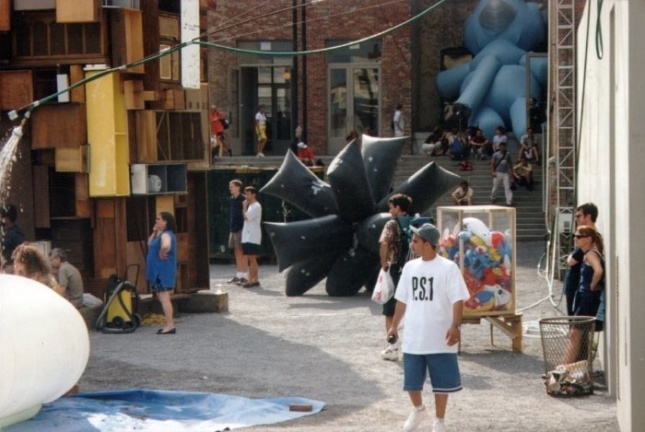
The Young Architects Program’s origins go back to 1998, a year after the Frederick Fisher-designed renovation enclosed the PS1 entrance courtyard in concrete walls. That year, Vienna-based artist group Gelatin installed a scrappy “environment” in conjunction with PS1’s first series of Warm Up summer concerts. Percutaneous Delights was composed of rough compositions of stacked refrigerators, discarded furniture, Po-mo inflatables, a graffitied shipping container, and an array of sprinklers to activate the space with what the P.R. at the time described as a welcoming hang-out for hot summer days.
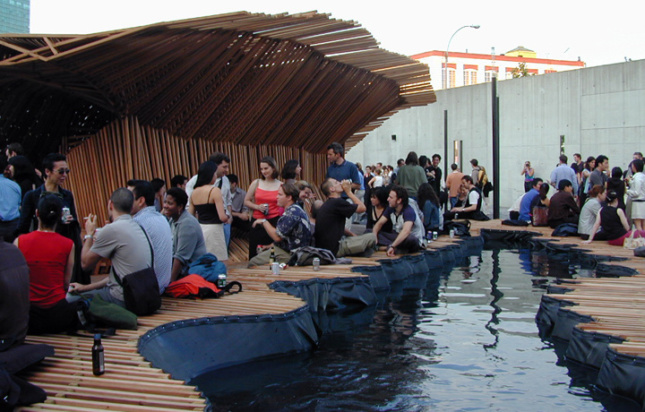
The following year, PS1 inaugurated its gradual absorption into the MoMA collective with a project by Philip Johnson, ever a follower of fashions (even if it led him, at times, in the direction of Nazism), who designed a Dance Pavilion DJ booth for the 1999 summer concerts as the first collaboration between the two institutions. It wasn’t until 2000 that MoMA architecture curator Terence Riley formally established the Young Architects Program as an annual invited competition to promote innovative practices. The program was simple: provide shade, seating, and water for Warm Up. The first winner—if anyone can still remember the now 190-plus person office as a young startup—was SHoP Architects, which demonstrated the kind of digitally designed, people-friendly, carefully crafted form-making that would make them the go-to firm for urban development projects that need a warmer public face.
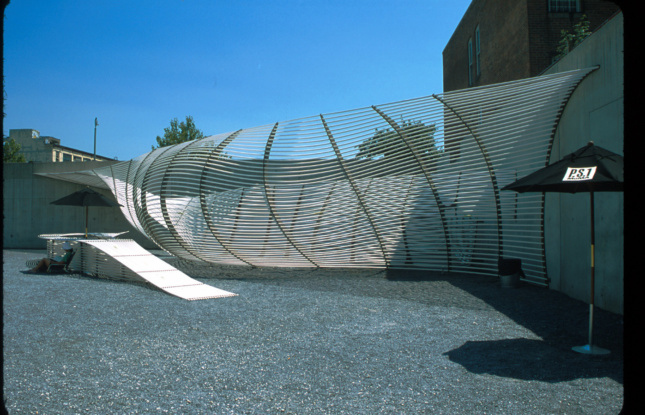
The program frequently created opportunities for younger architects to demonstrate conceptual ideas percolating in academia on a small but meaningful scale. Early winners of the competition included Lindy Roy (2001), William Massie (2002), Tom Wiscombe (2003), nARCHITECTS (2004), Hernan Diaz Alonso (2005), and OBRA Architects (2006). Sometimes the projects leaned in the direction of conceptual follies that had less of a service component, and early projects at times demonstrated the limits of digital design as often as its potential. The initial budget was $25,000, later increased to $75,000, though it became common knowledge that most firms would spend more out of their own pockets and lean heavily on interns to build out the ideas.
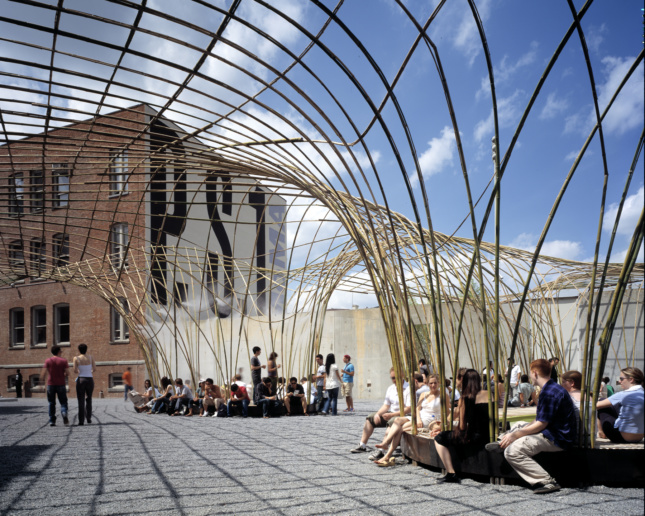
It was not an open competition: MoMA curators and advisors pre-selected a handful of designers and frequently favored well-connected circles from Ivy League schools and well-connected academics. The arc of the program traces a mini-curatorial history of MoMA, from Riley to Tina di Carlo and Peter Christensen, Barry Bergdoll, Andres Lepik, Pedro Gadanho, Sean Anderson, and Stierli, whose influences are reflected in the selections, along with changes in the profession. Little by little, P.S.1 Contemporary Art Center became PS1 MoMA, then MoMA PS1.
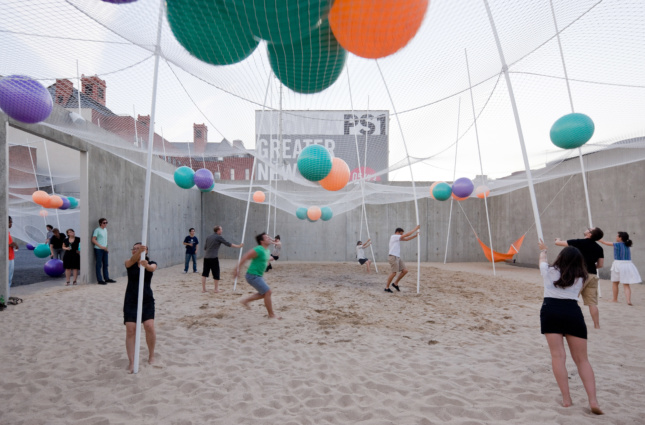
Some of the better-regarded highlights over the years included WORKac’s 2008 P.F.1 (Public Farm One), which installed a demonstration urban farm that could survive the barren courtyard environment and created an ascending staircase of planter boxes on top of the gravel-covered space. SO-IL’s Pole Dance (2010) engaged the playful possibilities of the program with colorful beach balls, overhead netting, hammocks, misters, and flexible PVC pipes, programmed with dance performances.
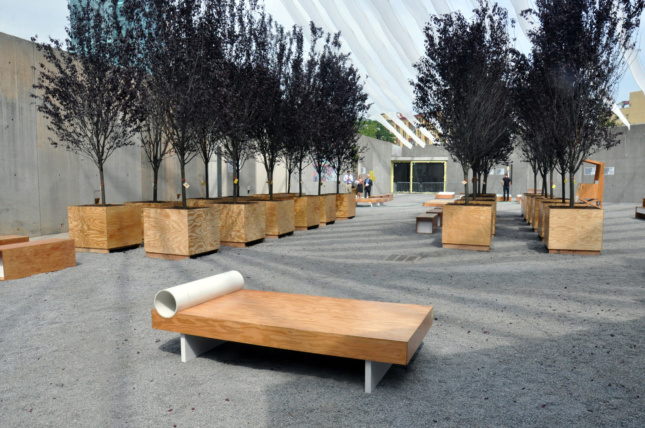
On the most service-oriented end, Interboro Partners (2011) used their project as a demonstration of how PS1 could engage the surrounding neighborhood, building out the courtyard with a kit-of-parts based on the expressed needs of nonprofit organizations, businesses, and others in the community who they interviewed and donated components to at the end of the summer.
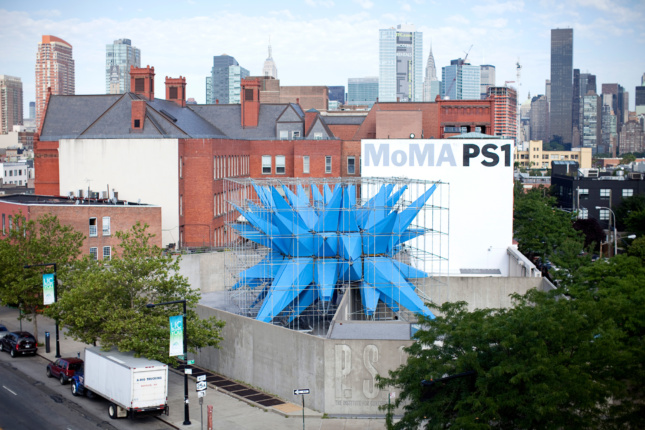
Later projects by MOS (afterparty, 2009), Hollwich Kushner (Wendy, 2012), The Living (Hy-Fi, 2014), Andrés Jacque/ Office for Political Innovation (COSMO, 2015), and Jenny Sabin Studio (Lumen, 2017) increasingly verged in the direction of critical grotesques, parametric design, and environmental remediation experiments to varying degrees of success. Through it all, the surrounding neighborhood blew up in an astonishing, if predictable manner, in ascending towers of luxury apartments, demolishing the beloved 5 Pointz graffiti space in the process.
If SHoP’s origins as a young firm are hard to remember, it’s even more difficult to retrieve the imperative that once made PS1 so improbable and ingenious a proposition in the first place—and the Young Architects Program an innocent delight—when its enterprising founder Alanna Heiss somehow convinced the Queens borough president to hand over a closed-down public school to a group of misfits from the SoHo/ Tribeca alternative space scene who proceeded to saw through floors as sculptures.
Notably, one of the names that appears as a funder in the first decade of YAP, along with Bloomberg, Agnes Gund, and Isaac Liberman, is none other than real-estate-reality-show-specter-turned-president Donald J. Trump. How a contemporary art center can meaningfully respond to the current situation, if at all, could be a starting point for the continuation of the program or its eventual cancellation, but the Young Architects Program unquestionably pioneered a model of temporary urban pavilion imitated worldwide, activating public spaces that without major capital improvements or altering their historic character remained inhospitable and inflexible for contemporary needs.









